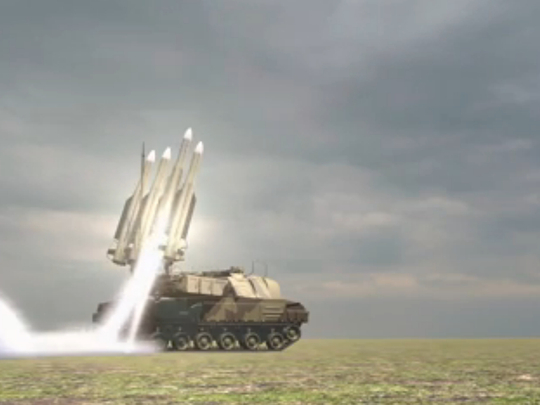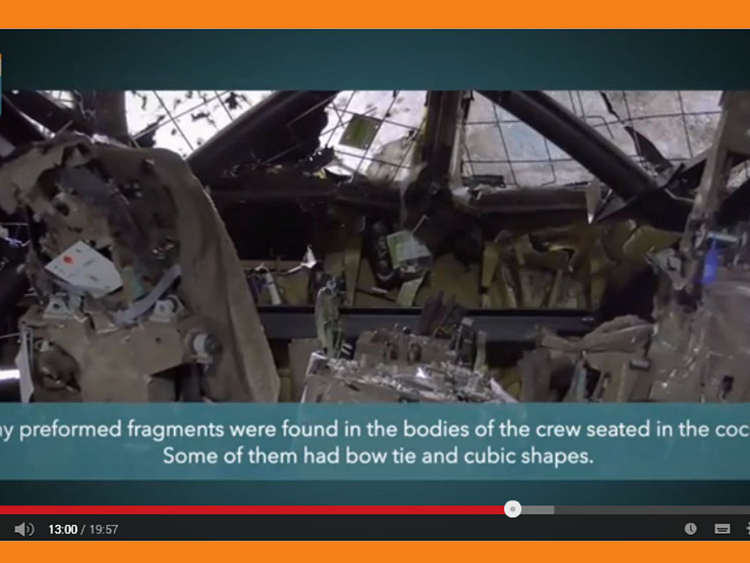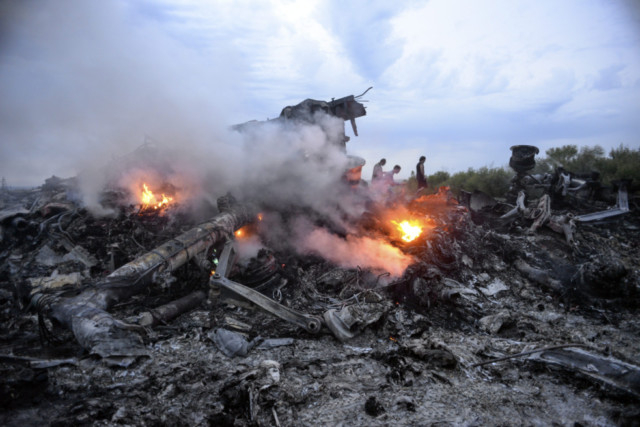
Gilze-Rijen Air Base, Netherlands: The missile that downed Malaysia Airlines flight 17 exploded less than a metre from the cockpit, killing the crew inside instantly and breaking off the front of the plane, the Dutch Safety Board said Tuesday as it presented the results of an official probe into the crash in eastern Ukraine.
It added that the tragedy that killed all 298 people aboard the plane on July 17, 2014, wouldn't have happened if anyone had thought to close the airspace of eastern Ukraine to passenger planes as fighting raged below.
The report did not consider who launched the missile.
However, it identified an area of 320 square kilometers from which the launch must have taken place. All the territory within the area was in rebel separatist hands at the time of the crash.
Warhead found
Safety Board chairman Tjibbe Joustra said the 15-month investigation found the warhead was that used on a Buk surface-to-air missile system.
Joustra said that Ukraine authorities had "sufficient reason" to completely close the airspace in that area, but "nobody gave a thought" to the possible threat to civil aviation.
Missile fragments found in the cockpit crew's bodies, as well as paint traces, enabled investigators to identify the Buk, Joustra said.
The investigation found that the missile killed the three crew in the cockpit instantly, while the passengers and other crew died due to reduced oxygen levels, extreme cold, powerful airflow and flying objects as the plane broke up and crashed.
Forward section
The investigators unveiled a ghostly reconstruction of the forward section of MH17. Some of the nose, cockpit and business class of the Boeing 777 were rebuilt from fragments of the aircraft recovered from the crash scene and flown to Gilze-Rijen air base in southern Netherlands.
On Tuesday in the village of Hrabove where the jet came down, Lyudmila Grigoryak - whose house was the closest to the crash site - brought red carnations to the field of dry grass where small pieces of the fuselage are still scattered.
Unlike a year and a half ago when heavy fighting was just nearby, the area is quiet and deserted.
All the camouflaged rebels who were patrolling the area and manning the checkpoints are gone.
Hours before the report was released, the missile's Russian maker presented its own report trying to clear the separatists, and Russia itself, of any involvement in the disaster.
Almaz-Antey contended that its experiments -- in one of which a Buk missile was detonated near the nose of an airplane similar to a 777 -- contradict that conclusion.
The experimental aircraft's remains showed a much different submunitions damage pattern than seen on the remnants of MH17, the company said in a statement.
It said the experiments also refute claims that the missile was fired from Snizhne, a village that was under rebel control.
An Associated Press reporter saw a Buk missile system in that vicinity on the same day.
Almaz-Antey in June had said that a preliminary investigation suggested that the plane was downed by a model of Buk that is no longer in service with the Russian military but that was part of the Ukrainian military arsenal.
Experiment
Information from the first experiment, in which a missile was fired at aluminum sheets mimicking an airliner's fuselage, was presented to the Dutch investigators, but was not taken into account, Almaz-Antey chief Novikov said.
Novikov said evidence shows that if the plane was hit by a Buk, it was fired from the village of Zaroshenske, which Russia says was under Ukrainian government control at the time.
When pressed by a journalist on Tuesday about the reports that Zaroshenske was in fact in rebel hands at the time of the crash, Novikov said it was outside his competence to comment on "who occupied what" at the time.
Many reports, including an investigation by the open-source group Bellingcat, also suggest the plane was downed by a missile fired from near Snizhne.
Report 'biased': Russia
In Moscow, Russian news agencies quoted Deputy Foreign Minister Sergei Ryabkov as saying on Tuesday that the Dutch investigation into the downing of a Malaysian Airlines passenger jet over eastern Ukraine last year is biased.
"It's a source of regret that, despite all Russia's repeated and lengthy attempts to organise the investigation in such a way that it is comprehensive and unbiased, and for it to consider all the information we have ... there is an obvious attempt to draw a biased conclusion, and carry out political orders," Ryabkov was quoted as saying.
'Persons of interest'
Meanwhile, in Amsterdam, an international team of prosecutors conducting a criminal investigation into the downing of Malaysia Airlines Flight 17 said on Tuesday it had identified "persons of interest".
The statement followed the publication earlier in the day of the final report on the cause of the crash by the Dutch Safety Board, which found that the plane was probably downed by a Russian-built missile.
Prosecutors said their independent findings so far "point in that same direction."
The statement by the Dutch-led team did not identify any suspects by name.














